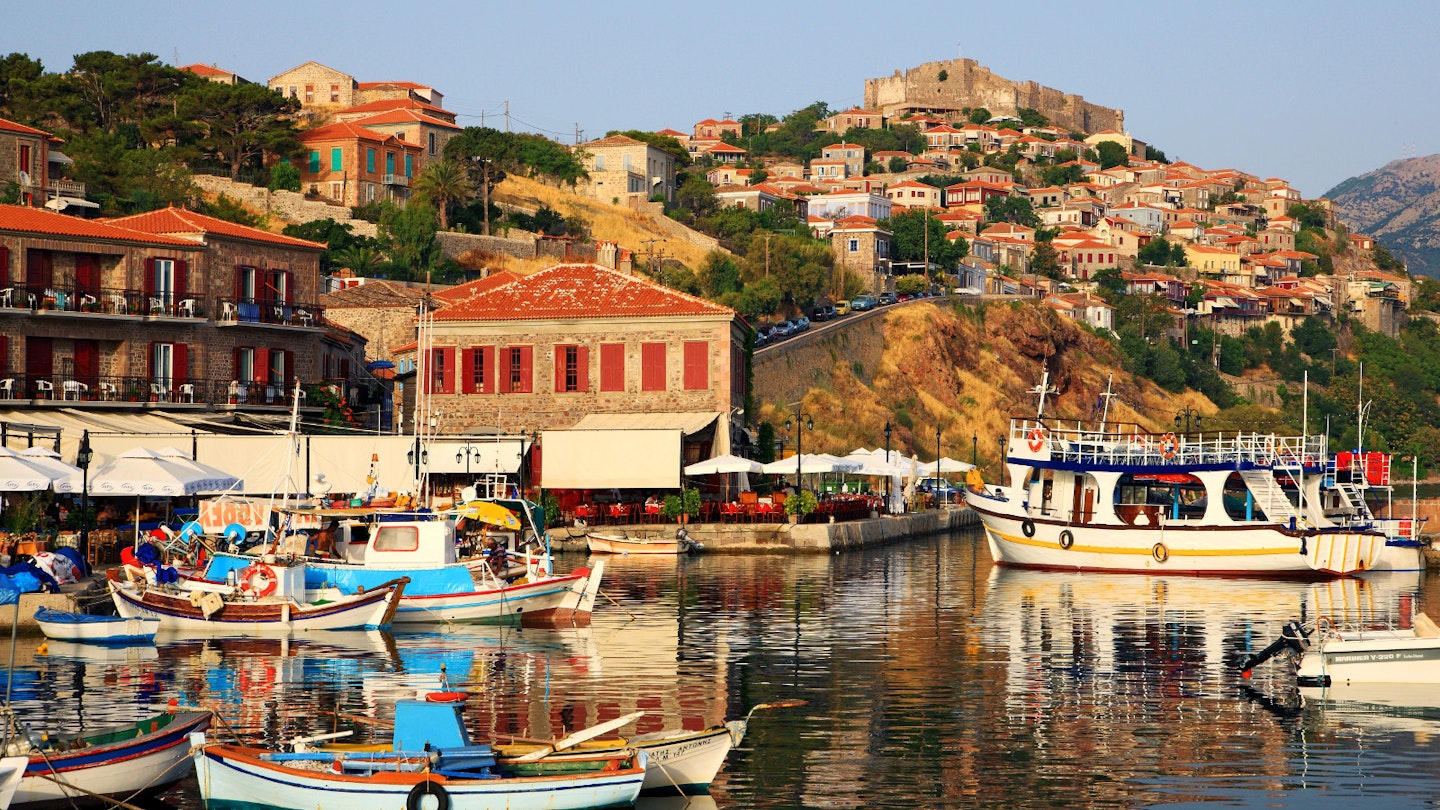iBestTravel
- Travel Stories
Share
Jul 13, 2018 • 5 min read

Canada boasts Newfoundland, Russia has Kamchatka, and the Greek islands offer an ultimate getaway, particularly in the northeastern corner of the country. The contrast here is more subtle, yet one can quickly feel a sense of otherness and remoteness when witnessing the wild lava-shaped terrain in southern Lesvos or the dark stone of fortified villages in Chios. This landscape starkly differs from the dazzling-white and deep-blue color scheme typical of the Cyclades.

Despite this, the Northeastern Aegean is anything but a backwater; rather, it serves as a cultural and political frontier where Christians and Muslims have coexisted for centuries. Historically, they have intermarried and conducted trade, except during periods of devastating wars. You can observe the cultural exchange in the presence of Turkish signs and restaurant menus, indicating a revival of relationships after decades of hostility.
The islands rest at the southeastern edge of the European Union, separated from Turkey by narrow straits. They were among the first to experience the recent wave of refugees and migrants from Asia and Africa. However, this should not deter travelers; the situation has improved significantly, and visitors have largely remained unaffected. Many individuals have volunteered to assist the arriving refugees, highlighting the kindness of the locals.

The islands’ rich history of diversity is beautifully reflected in the townscape of Molyvos (aka Mithymna)—an enchanting Ottoman town at the northern tip of Lesvos. Ascend the cobbled streets leading to the castle for panoramic views of the Aegean, and catch a glimpse of Turkey in the distance. Afterward, descend to the medieval Agora market square, where you can enjoy a traditional taverna lunch under shady plane trees or have a Turkish-style coffee at the Blue Fox coffee shop with a stunning view. As evening falls, head to the marina for cocktails amidst the lively yachtie crowd.
Another remnant from the Ottoman era includes the bathhouses situated over thermal springs scattered across Lesvos. The renowned Mineral Baths of Eftalou, located a few kilometers from Molyvos, are both historic and atmospheric. Their vaulted ceilings create a beautiful play of light, with vapor drifting through like friendly ghosts. As you soak in the hot, mineral-rich water, you may drift into a state of bliss. Upon waking, cool off in the sea before returning for yet another rejuvenating session. For modern amenities, the Therma Spa near the island’s capital, Mytilini Town, offers an impressive facility that includes an Ottoman-era spa and an outdoor pool overlooking the stunning Gulf of Gera.

Lesvos is significant in size compared to other Greek islands, featuring a distinct upturned shape that slows travel between its three divided sections. Renting a car in Mytilini Town to venture to the island’s western edge rewards you with stunning landscapes, where ancient lava flows have created a moonlike environment dotted with petrified tree trunks, preserved for millions of years.
Spend some relaxing moments at the beach and explore the vibrant bars of Skala Eresou, which is not only known as the birthplace of the poet Sappho but also attracts many LGBTQ+ travelers. On your return trip, take a leisurely pace, stopping in mountain villages for a cup of Greek coffee paired with “sweet spoons,” which are caramelized fruits and vegetables ranging from figs and grapes to eggplants and tomatoes.

The island of Chios possesses a unique character, feeling somewhat like a country within a country. While orange growers may seem the friendliest, their fortress-like structures turn Kampos, a vast suburban region outside Chios Town, into a complex maze with domestic life concealed behind stone walls—a tradition that originates from periods of mutual distrust. Nevertheless, exploring the inner courtyards that blend beautifully with orange orchards is worthwhile, and some of these stone houses now serve as hotels or even museums dedicated to citrus cultivation.

The most notable architecture on Chios comes from mastic tree farmers. Two villages, Mesta and Olympi, possess fortress-like structures, with labyrinthine lanes inside. The largest village, Pyrgi, prioritizes aesthetics over military functionality; its buildings exhibit intricate black-and-white geometric designs reminiscent of Islamic art or Kazimir Malevich’s abstract compositions.
Some of these structures, including Mastiha House, offer accommodation options, allowing visitors to stay in traditional yet magnificent settings. Social life here revolves around church activities and lengthy evenings spent in a kafeneio (coffee house), which remains a predominantly male pastime. Despite the village’s seemingly non-touristy nature, it boasts a claim as Columbus’s birthplace; many locals share surnames with him, and a house exists that locals assert is where the famous explorer was born. While Columbus is historically documented as a Genovese, locals argue that Chios was part of the Genovese Republic during that era, making their assertion valid.

Chios was historically the only location worldwide where mastic farming was commercially successful. The demanding process of extracting mastic tree sap, drop by drop, enriched the islanders but also rendered them vulnerable to harsh punishments from the Ottoman authorities. This poignant history is detailed at the state-of-the-art Chios Mastic Museum, located near Pyrgi—a modern structure surrounded by thriving mastic plantations.
Beyond the museum, the road leads down to Mavra Volio, a well-known beach adorned with coal-black pebbles that create an intriguing, almost bohemian atmosphere. Like other regions in Chios and Lesvos, visitors will only begin to appreciate this hidden paradise after experiencing the more commercialized islands and beaches. The Northeastern Aegean indeed serves as a testament to sophisticated Greek travel—if you find yourself here, take pride in your growth as an island connoisseur.




